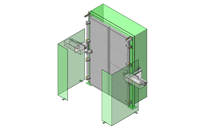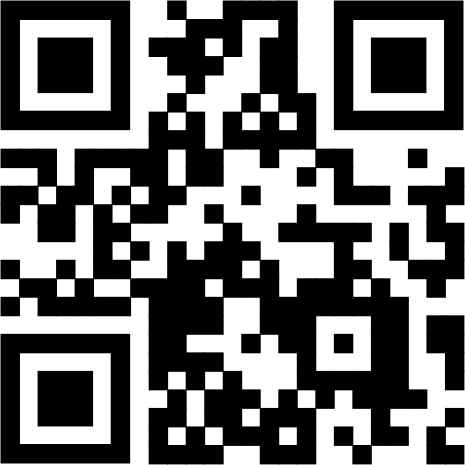(!) Since support from Microsoft will end on January 14th, 2020, Windows 7 will be excluded from the recommended environment from December 15th, 2019 on this site. Vì lý do Microsoft kết thúc hỗ trợ cho Windows 7 vào ngày 14/01/2020, Windows 7 sẽ là hệ điều hành không được khuyến khích sử dụng với trang web này từ ngày 15/12/2019.
Search by Category / Brand Tìm theo danh mục, nhãn hiệu
Search by Category Tìm theo danh mục
- [Thông báo] Cập nhật địa chỉ kho tập kết hàng hóa tại khu vực miền Nam của MISUMI Việt Nam. Xem chi tiết.
[Announcement] Update on warehouse address in the Southern region of MISUIMI Vietnam. See more. - [Cảnh Báo] Thủ Đoạn Lừa Đảo Từ Nhân Viên Giao Hàng – Yêu Cầu Trả Phí Ship. Xem chi tiết.
[Warning] Fraud Calling from Shipper - Asking to Pay Shipping Fee. See more.
ESCO Reflectors (for Photoelectric Sensors and Fiber Sensors)
Brand |
|
|---|---|
| CAD |
|
| Days to Ship |
|
1 itemsMặt hàng
- Sort By
-
You can add up to 6 items per a category to the compare list.

ESCO
【Product Specifications】・For reflection type photoelectric switches (sensor)・Dim.-40.3 x 59.5 x 7.5mm・For EA940LM-1, -2, and -4・Directionality-30° or longer・Operating ambient temperature: -25 to 55℃・Protection structure-IEC Standard IP67・Type-E39-R-1
From: 316,118 VND Days to Ship: Số ngày giao hàng: 5 Day(s) or more  5 Day(s) or more
5 Day(s) or more
| BrandNhãn hiệu |
|---|
| Product SeriesDòng sản phẩm |
| From |
| Days to ShipSố ngày giao hàng |
You can add up to 6 items per a category to the compare list. | |
| BrandNhãn hiệu | ESCO |
| Product SeriesDòng sản phẩm | |
| From | 316,118 VND |
| Days to ShipSố ngày giao hàng | 5 Day(s) or more |
Loading...Tải…
ConfigureTạo
Application example related to this categoryVí dụ ứng dụng liên quan đến danh mục này
Related Categories to Reflectors (for Photoelectric Sensors and Fiber Sensors)Danh mục liên quan đến Reflectors (for Photoelectric Sensors and Fiber Sensors)
FAQ Reflectors (for Photoelectric Sensors and Fiber Sensors)
- Question: What are reflectors used for in photoelectric and fiber sensors?
- Answer: Reflectors are used in photoelectric and fiber sensors to detect the presence or absence of objects. In the context of photoelectric sensors, they are used with retroreflective sensors, where the emitted light is reflected by the object and measured by a receiver. This setup allows for the detection of the object. Reflectors and reflective tapes are designed to be used with photoelectric retroreflective sensors, ensuring optimum performance. In the case of fiber optic sensors, reflectors are not required for the diffuse sensor, as it does not need reflectors or receivers for operation
- Question: How do reflectors enhance the performance of these sensors?
- Answer: Reflectors enhance the performance of photoelectric and fiber sensors in several ways:
1.Improved Detection:
- Enhances range and accuracy of photoelectric sensors.
- Reflects emitted light back to the receiver for better object detection.
2.Optimum Performance:
- Specifically designed for photoelectric retroreflective sensors.
- Ensures the best performance with reflective tapes.
3.Versatility:
- Available in various shapes and materials (acrylic, ceramic).
- Suited for a wide range of applications and environments.
4.Durability:
- Engineered to withstand different maximum temperatures.
- Ensures longevity and reliability in diverse industrial settings. - Question: Can reflectors be used with all types of photoelectric and fiber sensors?
- Answer: Reflectors can be used with various types of photoelectric and fiber sensors, but their compatibility depends on the specific sensor design and the type of reflector used. Here are some key points to consider:
Photoelectric sensors can be used with or without reflectors, depending on the type of sensors, for example Retro-reflective Photoelectric sensor is necessary to used with reflectors
Fiber optic sensors, specifically diffuse sensors, do not require reflectors or receivers for operation.
In summary, reflectors can be used with photoelectric sensors, but their compatibility depends on the sensor design and the type of reflector used. Fiber optic sensors, particularly diffuse sensors, do not require reflectors for operation. - Question: What materials are commonly used in making these reflectors?
- Answer: Common materials used in making reflectors for photoelectric and fiber sensors for example
1. Aluminum: Lightweight and durable, aluminum is a popular choice for reflectors due to its high reflectivity and resistance to corrosion.
2. Mylar: A type of polyester film with a reflective coating, Mylar is lightweight, flexible, and commonly used in inexpensive reflectors.
3. White PVC (Polyvinyl Chloride): White PVC panels are used as reflective surfaces in some low-cost reflectors.
4. Acrylic: Transparent acrylic sheets can be used with reflective coatings for creating efficient reflectors. - Question: How do you choose the right reflector for a specific sensor application?
- Answer: To choose the right reflector for a specific sensor application, consider the following factors:
1. Sensor Type : Choose a reflector compatible with the specific sensor type (e.g., retroreflective for photoelectric sensors).
2. Sensing Mode : Understand the sensor's sensing mode to avoid issues like "blind spots" due to improper reflector placement.
3. Material and Shape : Select reflector material (acrylic, ceramic, glass, metal, resin) and shape based on environmental conditions and sensor requirements.
4. Application Needs : Consider temperature range, mounting type, and special features to ensure the reflector meets application demands. - Question: Are there different types of reflectors for different sensing distances?
- Answer: Yes, there are different types of reflectors for different sensing distances in photoelectric sensors. Retroreflective reflectors are used for longer sensing distances, while diffuse reflectors are more suitable for shorter distances. Polarized retro-reflective sensors require a corner-cube reflector, which is a type of reflector with the ability to accurately return.
The choice of reflector depends on the specific sensor application, the sensing mode, and the desired sensing distance.













How can we improve?
How can we improve?
While we are not able to respond directly to comments submitted in this form, the information will be reviewed for future improvement.
Customer Privacy Policy
Thank you for your cooperation.
While we are not able to respond directly to comments submitted in this form, the information will be reviewed for future improvement.
Please use the inquiry form.
Customer Privacy Policy